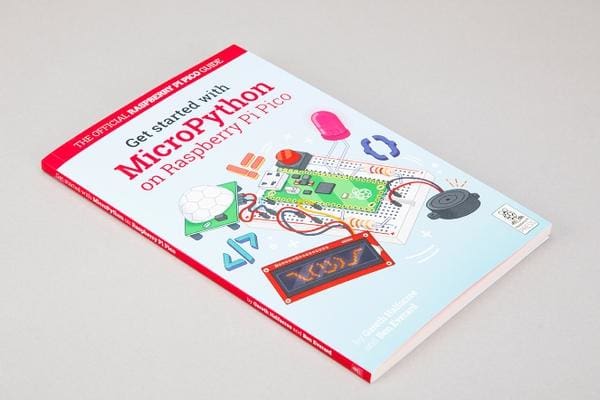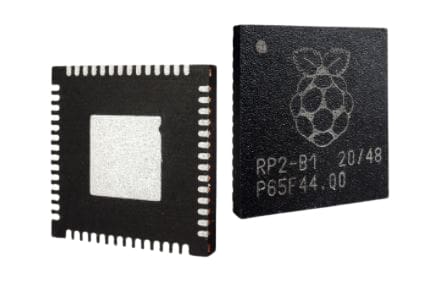It's an extremely versitile little board. Designed for everyone, from beginners learning to code to engineers creating embedded industrial applications. The board doesn't use flashy Linux operating systems, its programmable in both C and MicroPython using your favourite IDEs.
The RP2040 microcontroller chip
A small, cheap and user friendly microcontroller chip designed in the UK by the Raspberry Pi Foundation. The RP2040 features a Arm Cortex-M0+ clocking in at up to 133MHz with 256kb of internal RAM and has a variety of I/O options including the standard I2C, SPI and programmable I/O pins. The chip itself is available for purchase seperately, offering makers the chance to to add the RP2040 to their designs and take advantage of the chips high performance, low cost and ease of use.
Connections
Unlike most other Raspberry Pi boards the Pico doesn't have a video or audio output. Aside from the USB programming/power port there are no other ports like you'd expect from a standard Pi except for the boards pins. Which contain:
- 26 x Multipurpose I/O pins
- 2 x SPI pins
- 2 x I2C pins
- 2 x UART pins
- 3 x 12-bit ADC pins
- 16 x Controllable PWM channels
What will you make with the Pico?
There's a wide range of products designed to expand the possible uses of the Pico and others that utilise the power of the RP2040 microcontroller chip. We'll link some of our favourites below.
Designed for the Raspberry Pi Pico:

|

|

|
| Grove Starter Kit for Raspberry Pi Pico | Maker Pi Pico Base | Get Started with MicroPython on Pico |
Designed Using the RP2040:

|

|

|
| Pro Micro - RP2040 | Feather RP2040 | Seeduino XIAO RP2040 |




